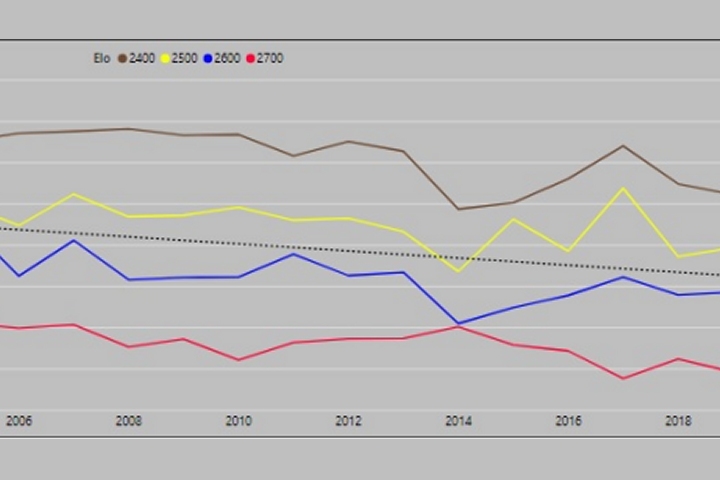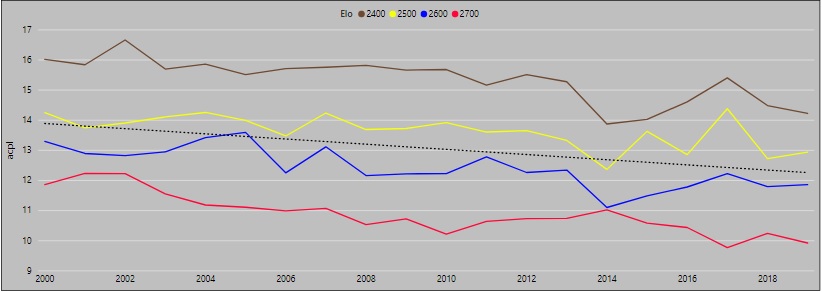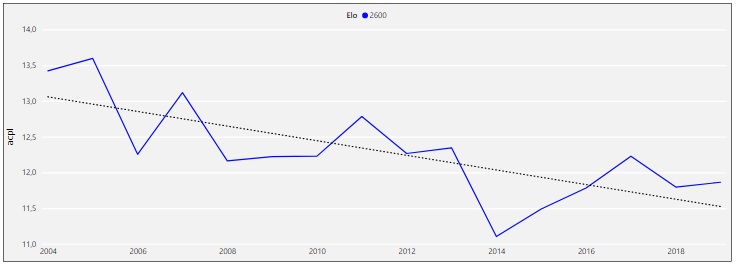


ChessBase 17 - Mega package - Edition 2024
It is the program of choice for anyone who loves the game and wants to know more about it. Start your personal success story with ChessBase and enjoy the game even more.
By Martin Voigt
In light of a recent article by Walter Wolf, we want to give another perspective on the subject of Elo ratings as an agent of playing strength.
Is a player with 2600 in 1990 or 2000 comparable to one in 2019? Was he stronger? Weaker?
On the one hand, there are many more players now with 2600+ or even 2700+ than there were 20 or 30 years ago, so it suggests itself that there is Elo inflation and higher ratings are easier attainable nowadays. On the other hand, players might have become much better due to improved training possibilities like chess databases, strong engines and a faster spread of information. Furthermore, the player pool has increased, giving more people the opportunity to reach a considerable playing strength.
To evaluate playing strength we analysed more than 300,000 games, checked each played move with Stockfish, and calculated the average centipawn loss (acpl). The centipawn loss (cpl) is the difference between the evaluation after the stockfish move and the evaluation after the played move. (We capped the cpl at 500.) Though the acpl is just half the truth about playing strength as it doesn't take the complexity of positions into account, it is a sufficient measure for our purpose to judge the playing strength of huge groups of players.

2600 includes all players with Elo 2551-2650
There is a decrease in acpl, meaning, the players made smaller mistakes as the years went by. And the better play isn't just caused by improved knowledge of opening theory.
.jpg)
This graphic shows the acpl for players around 2600 by timeframe and movenumber. We combined moves in steps of 5, e.g. the value at move 35 incorporates the moves 31 to 35. (Typically, the acpl is highest before the time control at move 40. Not even the implementation of increments changed that.)
The decline in acpl can be observed for all ratings, not only in games of strong GM / professionals.

Summary: We see a rating deflation during this millenium. A player in 2019 was stronger than a player with the same rating in 2000.
In 1993, FIDE decreased the rating floor from 2205 to 2005, in 2001 to 1800, in 2004 it was lowered to 1600, and in 2006 it was reduced to 1400. Later, the floor even dropped to 1000. The acpl of players with a similar rating didn't change in a significant manner between 1993 and 2004.

But after bringing down the rating floor to 1600, the acpl went down.

Nowadays, many young players get a rating early in their chess development. They enter the list with a low rating which increases over time, taking points from the player pool in the process, thereby leading to rating deflation.
Adolescents have a higher k-factor. That speeds up their gains but doesn't stop seasoned players from losing rating points against their yet underrated opponents.
Young players and players with few rated games who clearly outperform their old rating could be rated with their performance. That way, points would be lost less often just for the opponent being underrated.